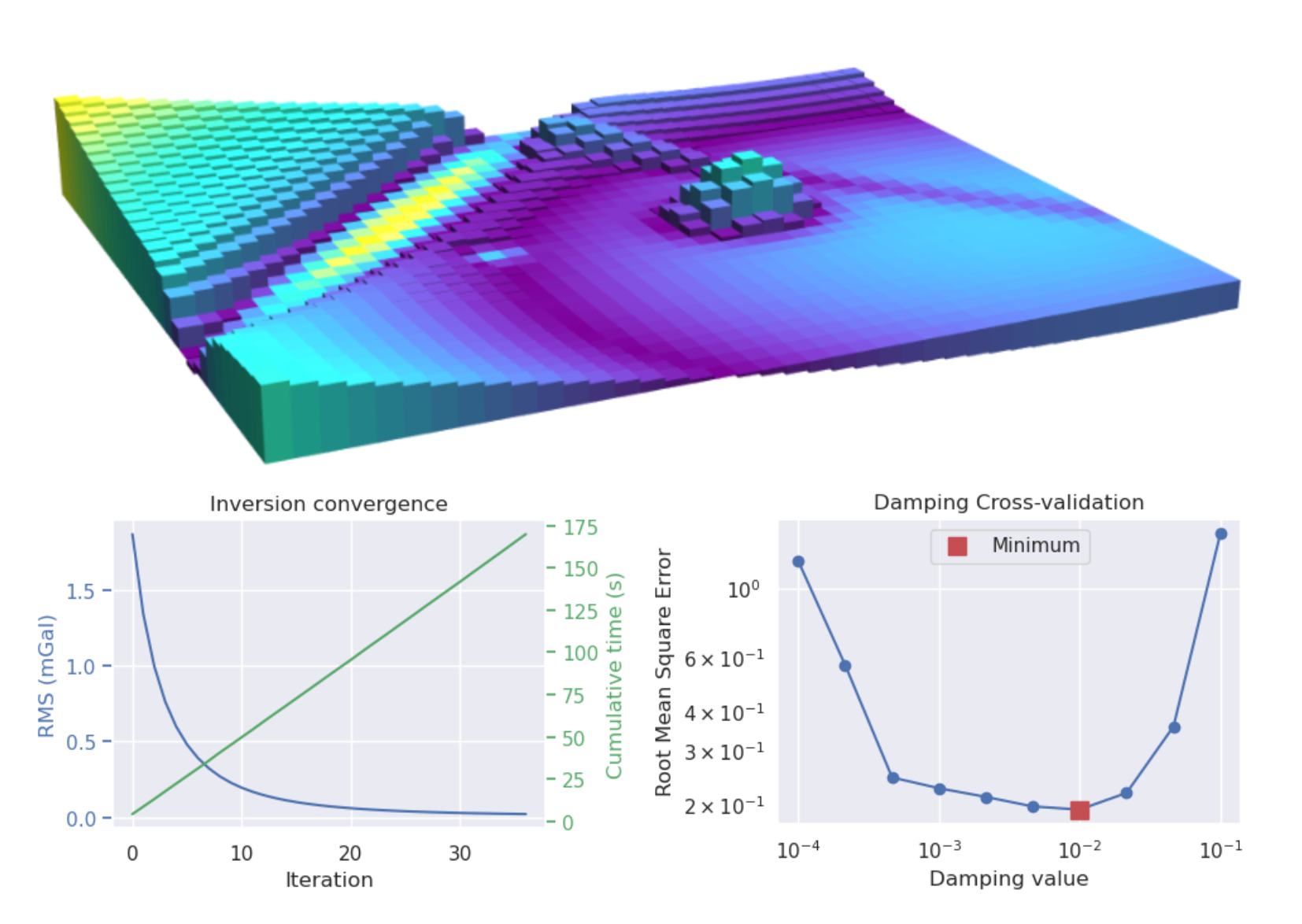Invert4geom is a Python library for performing 3D geometric gravity inversions, where the aim is to recover the geometry of a density contrast.
Typical use cases include modeling the topography of the Moho, the sediment-basement contact, or bathymetry. These density contrasts are represented by a layer of vertical right-rectangular prisms. Since we use vertical prisms, they don't take the curvature of the Earth into account. For large-scale applications, such as continental studies, it would be better to use tesseroids instead of prisms.
See the overview for further description of this package and what it can be used for.
- invert gravity data to recover the topography of a density contrast
- use with gridded gravity data
- discretization using vertical right-rectangular prisms
- performing regional-residual separation
- stochastic uncertainty analysis of inversion results
- basic visualization tools
- performing parameter-estimation inversions (i.e. recovering density values) -> see SimPEG or pyGIMLi
- a point-and-click GUI -> see Geosoft/Seequent Oasis Montaj or MiraGeoscience VPmg
- a ready-to-use inversion with minimal user input
- use with discrete (un-gridded) gravity data -> see Harmonica for gridding your data
- for processing gravity data -> see Harmonica for gravity processing tools
- for use with tesseroids, or non-regular grids (raise an issue request if you want this implemented!)
- publication-quality visualization -> see PyGMT for plotting tools




